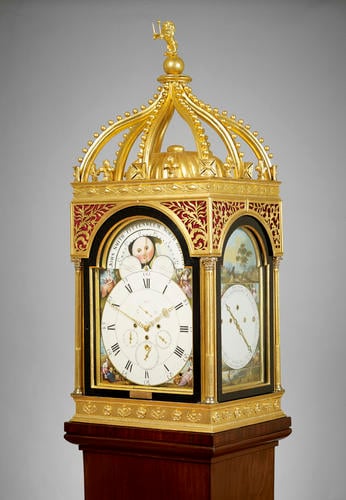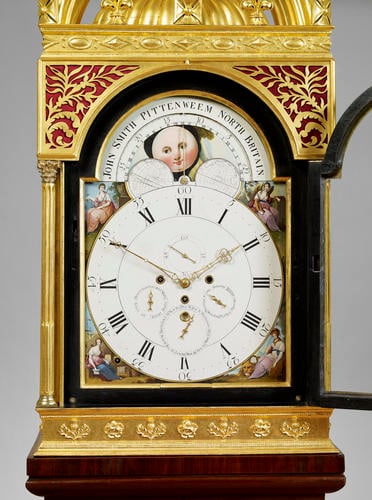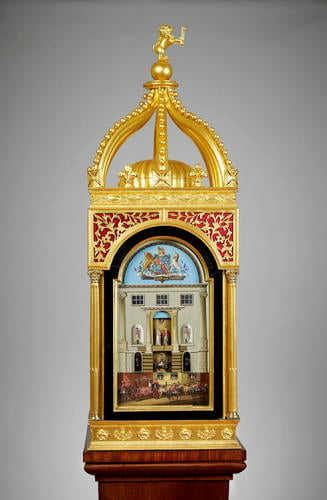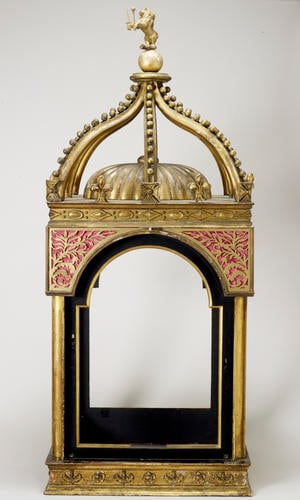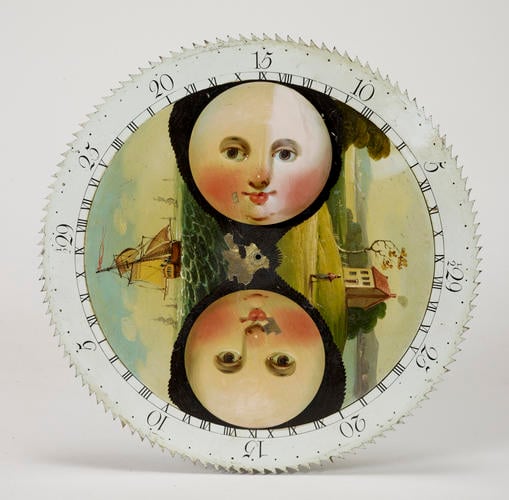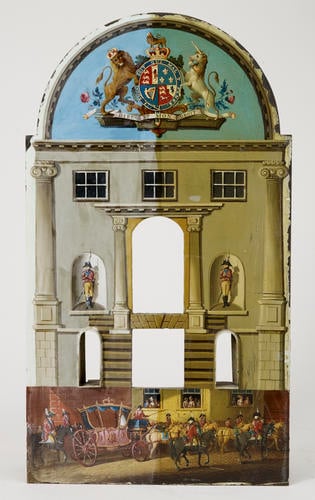-
1 of 253523 objects
Pedestal clock 1780 - 1800
Oak, gilt, paint, glass | 143.5 x 60.4 x 50.0 cm (whole object) | RCIN 2918
-
This magnificent large-scale automaton and musical clock with three painted dials was made by John Smith, who came from the small fishing village of Pittenweem, in the East Neuk of Fife. By the late eighteenth century there was a strong tradition of clockmaking in Scotland, particularly in the larger towns and cities such as Edinburgh, Dundee and Aberdeen, but there were few clockmakers working in Fife. Little is known of Smith's life; in 1775 he stated in an advertisement that 'he was bred in the trade and had never been out of the country'.Despite the fact that Pittenweem was tucked away in a remote corner of Fife, Smith established a successful business specialising in the manufacture of clocks with highly complicated mechanisms and distinctive dials. The tradition of clockmaking in this area of Scotland continued after his death.
The main dial, on the front of the clock, shows the time and has subsidiary dials for the month, date and day of the week, with a control for music, chiming and silence. In a ddition, there is a lunar phases display and a tidal dial. The musical dial on the left side, shows 16 tune titles arranged in two concentric rings, set against a background of landscape scenes. The automaton dial, on the left-hand side, shows two processions of figures, the upper one of 15 members of the royal family, the lower one a similar number of members of the household, who march every three hours across the exterior of a mansion, possibly intended to be a palace. The painting of the landscapes and other scenes has been attributed to the Edinburgh artist Alexander Nasmyth, who began his career apprenticed to a coach painter.
The case, which stands on a later pedestal, is of carved and gilded oak, with a border of alternating thistles and roses, Corinthian columns at the angles, supporting the fretwork foliate broken arches which frame the clock's four faces. Above is a frieze of egg and lozenge decoration surmounted by an open strutted structure decorated with fleur-de-lys and crosses with an orb which supports a lion holding a sword and mace in its paws.In 1808 John Smith is recorded as having exhibited this clock in London, together with another automaton and musical clock (now in the National Museums Scotland). While he was there he had the pedestal clock valued at £900, but failed to find a purchaser for either clock. He returned to Edinburgh and in 1809 put the clocks up for sale by lottery, together with a number of other pieces. Despite making tickets available for six months, Smith only realised £500 for all the items, less than half of the expected sum. The purchaser was not recorded but in the early twentieth century the clock was acquired by William B. Smith, of Glasgow, an antiquarian and keen collector of clocks. It was exhibited in the Glasgow Exhibition of 1911 and purchased by the citizens of Glasgow in 1922. The following year it was presented to the Duke of York and Lady Elizabeth Bowes-Lyon on the occasion of their marriage. A similar clock is in the possession of the Duke of Buccleuch.
Provenance
Presented to The Duke of York (later King George VI) and Lady Elizabeth Bowes-Lyon on the occasion of their marriage, 26th April 1923 by the citizens of Glasgow.
-
Creator(s)
(clockmaker)(nationality)Acquirer(s)
-
Medium and techniques
Oak, gilt, paint, glass
Measurements
143.5 x 60.4 x 50.0 cm (whole object)
Alternative title(s)
Clock and automaton
The Pittenweem clock
Place of Production
Pittenweem [Fife]
